Welcoming a new dog into your family is an exciting moment filled with the joy of companionship and new adventures. However, before your furry friend steps paw into your home, it’s essential to consider the adjustments needed to ensure a safe and comforting environment for them.
Think about creating a space that not only accommodates your dog’s needs but also sets the stage for a smooth transition. This includes safeguarding various areas of the house, setting up a designated sleeping zone, and organizing a consistent feeding spot.
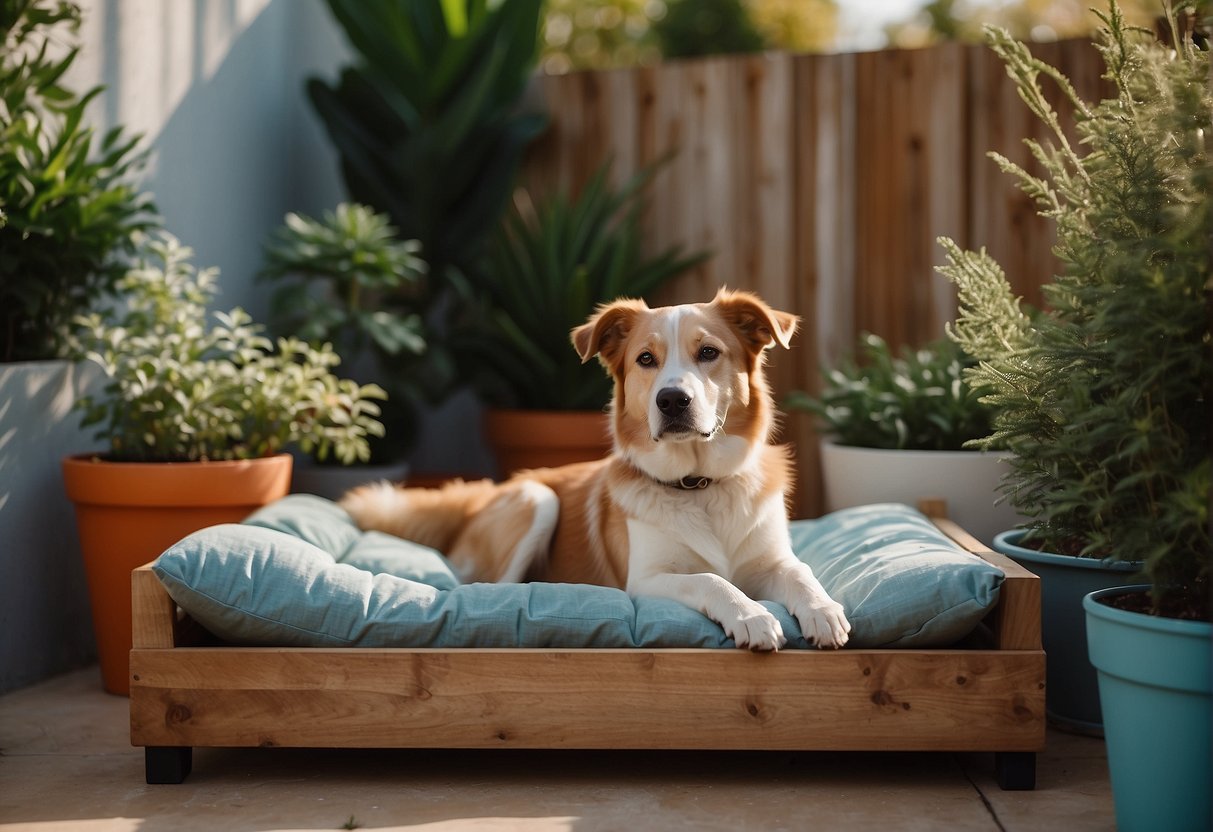
Consider also the outdoor space where your dog will spend time playing and exploring. Ensuring this area is secure and fun is just as important as prepping the indoors. You’ll want to choose durable, pet-friendly materials for floors and furniture to withstand the wear and tear of your new companion. And let’s not forget those puppy teeth! Get your home ready for a teething dog by keeping personal belongings out of reach and providing appropriate chew toys.
By taking these steps, you’ll not only create a welcoming atmosphere for your adopted or rescue dog but also help prevent potential mishaps.
Key Takeaways
- Create a secure and comfortable environment before the dog arrives.
- Set up dedicated areas for sleep, feeding, and play to help your dog acclimate.
- Prepare indoors and outdoors to ensure safety and manage puppy teething.
Make Your Home Safe Before the Dog Arrives
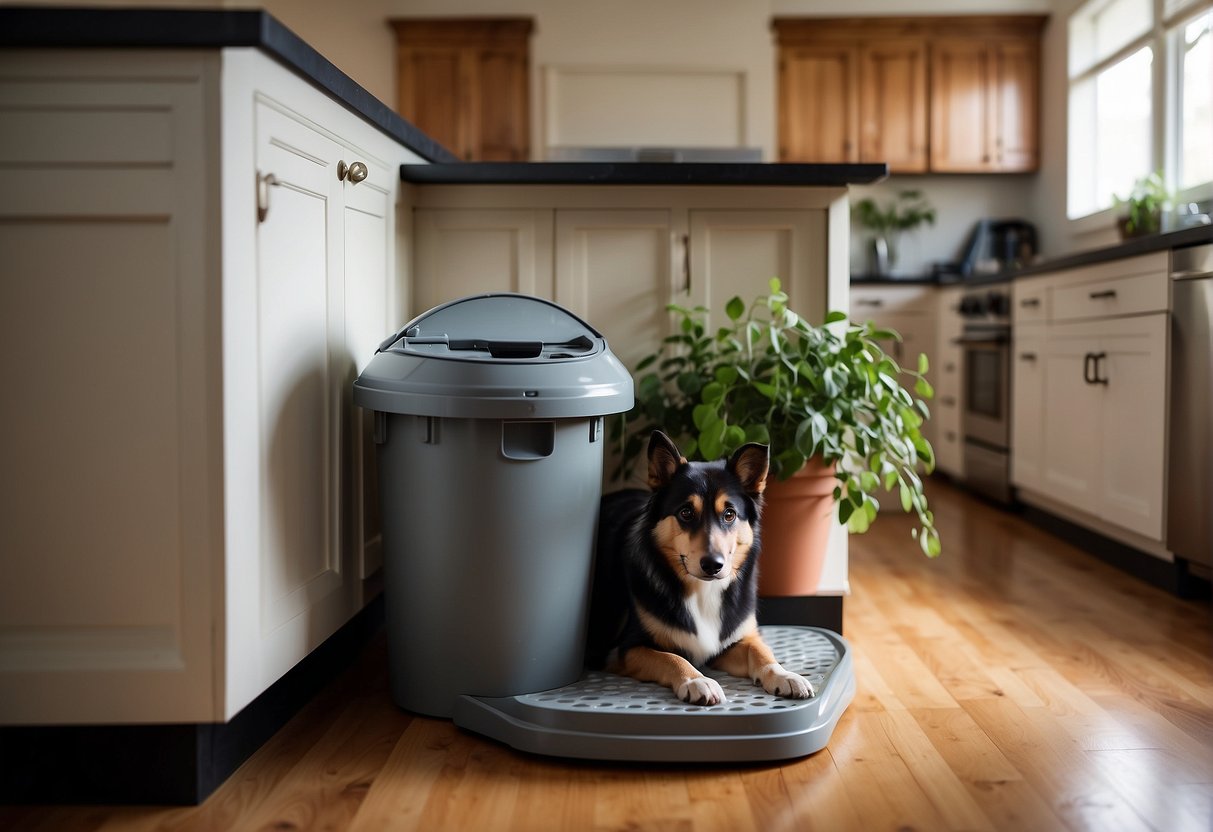
Before your new furry friend sets a paw through the door, make sure they’ll be stepping into a safe and secure space. Creating a dog-proof environment is crucial; it protects both your pet and your possessions. Let’s walk through some specific steps to ensure safety is top-notch in your home.
Check for Indoor Hazards Like Loose Wires
Look around and get down to your dog’s level. You’ll often spot loose wires or cords that could be tempting for a chew. Secure these out of reach or use protective covers to prevent any electrical mishaps. This isn’t just for your dog’s safety, but it keeps your gadgets safe, too.
Secure Toxic Substances in Cabinets
Dogs can be curious, and that sometimes means they get into things they shouldn’t. Ensure that all cleaning supplies, medications, and other toxic substances are locked away in cabinets or on high shelves. If you don’t have a secure spot, consider childproof locks to keep those snouts out.
Block off Unsafe Areas
Some areas of your home might not be safe for your dog to explore. Use baby gates or pens to block off staircases, workshops, or rooms with lots of hazards. This helps create a specific safe space for your dog and keeps them away from harm.
Remove Small Objects That Can Be Swallowed
Dogs, especially puppies, love to explore the world with their mouths. Small objects like coins, jewelry, or even toy parts can pose a choking risk. Make sure to clear these from floors and low surfaces. Keeping these items out of reach will save you a lot of worry (and potentially a trip to the vet).
Set up a Sleeping Area for Your Dog
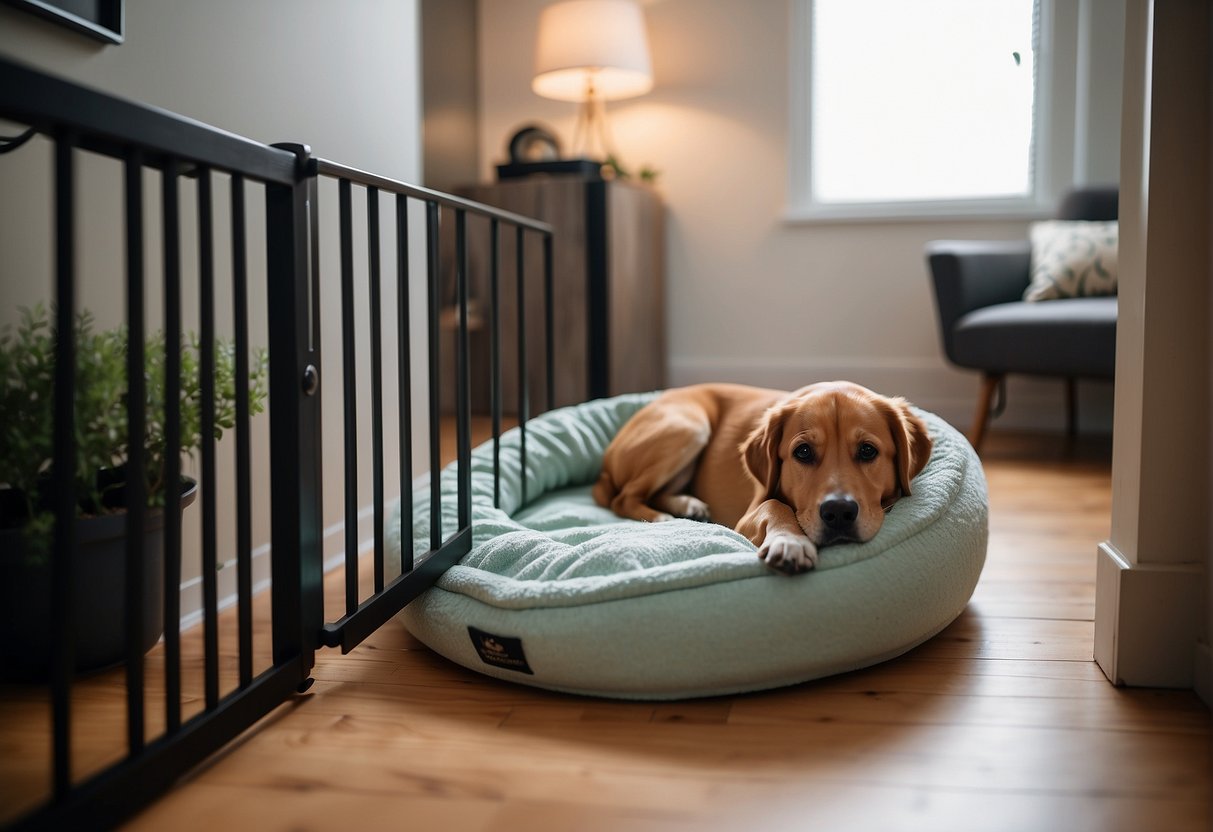
When you adopt a dog, creating a comfortable and secure sleeping area is crucial. It helps your new furry friend feel safe and settled in their new home. Here’s how you can set up the perfect spot.
Choose a Quiet Corner
Your dog deserves a peaceful place to rest, free from the household hustle and bustle. Look around your home for a corner that’s typically quiet, especially at night. A spot without too much foot traffic, away from loud noises, and ideally, not too bright, makes an ideal sleeping area. This will be your dog’s go-to place for relaxation and sleep.
Pick the Right Size Bed
Choosing a comfy bed is essential for your dog’s comfort. It should be large enough for them to stretch out but cozy enough to give them a sense of security. Here’s what to keep in mind:
- Measure your dog from nose to tail to ensure the bed is big enough.
- Look for a bed with raised edges for head support and a sense of boundary.
- The material should be soft yet durable, and easy to clean.
Consider a Dog Crate for Training
If you’re planning on crate training, introducing a crate as the sleep area can do wonders. It serves as a safe space where your dog can retreat when they need quiet time. Here’s how to choose and introduce a crate:
- Select a crate size that allows your dog to stand up and turn around comfortably.
- Place a comfortable bed or padding inside the crate to make it inviting.
- Gradually introduce your dog to the crate with treats and positive reinforcement to create a positive association.
Organize a Feeding Spot
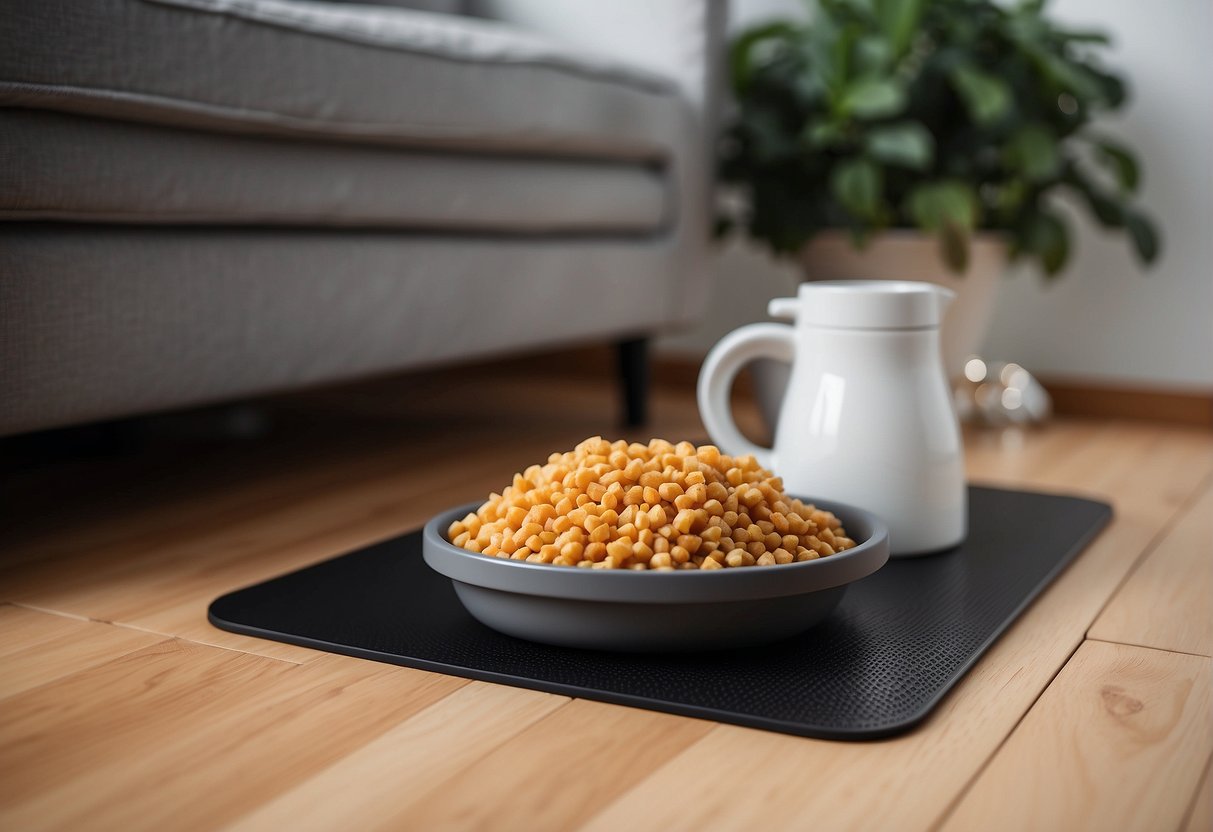
Before you bring your new furry friend home, you’ll want to set up a dedicated area for them to enjoy their meals. This spot should be practical for your dog’s dining habits and convenient for your home’s layout.
Choose Non-Tip Bowls for Food and Water
Your dog’s food and water bowls are more than just dishes; they’re important tools for their daily routine. Opt for heavy, non-tip bowls to avoid messes during meal times. Materials like stainless steel or ceramic are great because they’re sturdy and easy to clean. Make sure the bowls are the right size for your dog’s breed – large enough to hold their food, but not so big that they’re difficult to eat from.
Keep Feeding Area Away from Busy Zones
It’s best to find a quiet corner of your home for your dog’s meals, away from high traffic areas. Loud noises and the hustle and bustle of household activity can make your dog anxious or distract them from eating. A peaceful spot will help establish a calm eating routine, which is essential for their diet and digestion.
Consider Mat Placement to Minimize Spills
Lastly, to keep the feeding area clean, place a mat under your dog’s bowls. This is especially helpful for dogs that tend to get a little excited and splash water around or drop food. The mat should be easy to wipe down or throw in the wash, which will save you a lot of cleanup time and protect your floors from any spilt food or water.
Prep Outdoor Spaces for Safety and Fun

Before you welcome a furry friend into your home, it’s vital to ensure that your outdoor space is as safe and enjoyable as it can be for a dog. That means making adjustments that provide your new pet with the freedom to exercise and explore, while ensuring their absolute safety.
Fence Your Yard Securely
Securing the perimeter of your yard with a sturdy fence is a top priority. This not only prevents your dog from wandering off but also blocks unwanted visitors. A solid fence should:
- Be tall enough to prevent jumping over.
- Have no gaps wide enough for squeezing through.
- Include a self-closing gate to avoid accidental escapes.
Remove Toxic Plants and Dangerous Tools
Your dog’s safety is paramount, and part of that is making sure they can’t get into anything harmful. Survey your yard for plants that could be toxic to dogs, and remove them. Common toxic plants include azaleas, lilies, and sago palms. Also, secure any gardening tools or chemicals in a locked shed or storage, ensuring they’re out of paw’s reach. These might include:
- Pesticides
- Fertilizers
- Sharp tools like shears or rakes
Add Shade and Shelter for Comfort
Dogs love playing under the sun, but they also need a cool, shaded space to relax and protect them from overheating. Consider these options:
- Installing a dog house that provides shelter from rain and sun.
- Ensuring there are shady trees or a patio cover to rest under during hot days.
- Placing fresh water in these shaded areas to keep your dog hydrated.
Choose Pet-Friendly Floors and Furniture
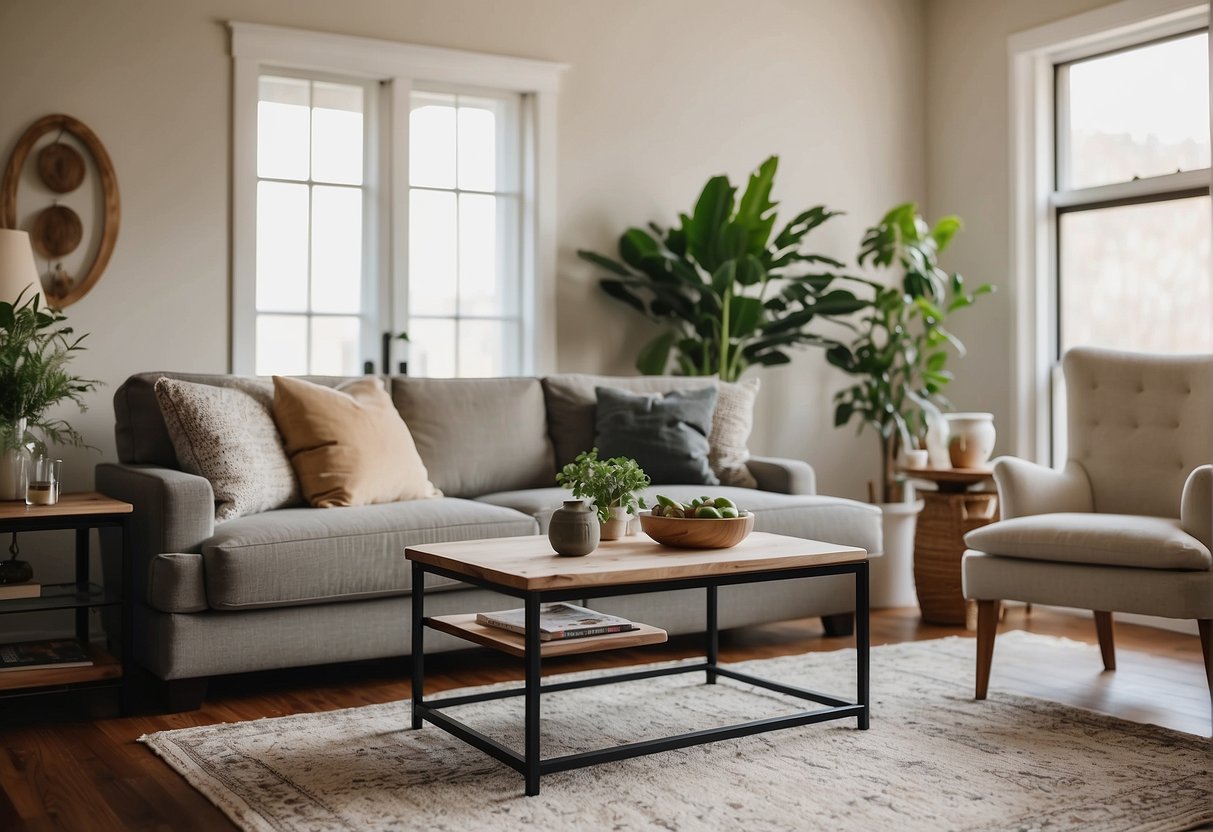
When adopting a dog, it’s important to choose flooring and furniture that will stand up to your new pet’s nails and shed fur. Think about surfaces that will be comfortable for them and easy for you to maintain.
Select Durable, Easy-to-Clean Materials
Flooring: Go for hard surfaces like tile or laminate, which are scratch-resistant and simple to clean. Avoid softwoods that can be easily damaged by claws. For cleaning, a mop and some mild detergent will generally do the trick.
Furniture: Look for couches and chairs covered in tough fabrics like microfiber or leather, which can be wiped down quickly. Having a stock of grooming supplies on hand, such as lint rollers or upholstery brushes, can help keep furniture free of pet hair.
Use Slip-Proof Rugs in High Traffic Areas
Consider laying down rugs with slip-proof backings in places where your dog will run and play the most. This helps to prevent accidents and provides a comfortable resting place for your pet. Make sure these rugs are machine-washable to keep your home smelling fresh.
Opt for Furniture Covers or Scratch Protectors
Furniture Covers: These can protect your sofas and chairs from dirt and sharp nails, and they’re easy to toss in the wash.
Scratch Protectors: Apply these transparent pads to the sides and legs of furniture to safeguard them from being marked up by your dog’s claws. It helps to maintain the integrity of the wood or fabric, saving you from expensive repairs or replacements.
Get the Right Toileting Solutions
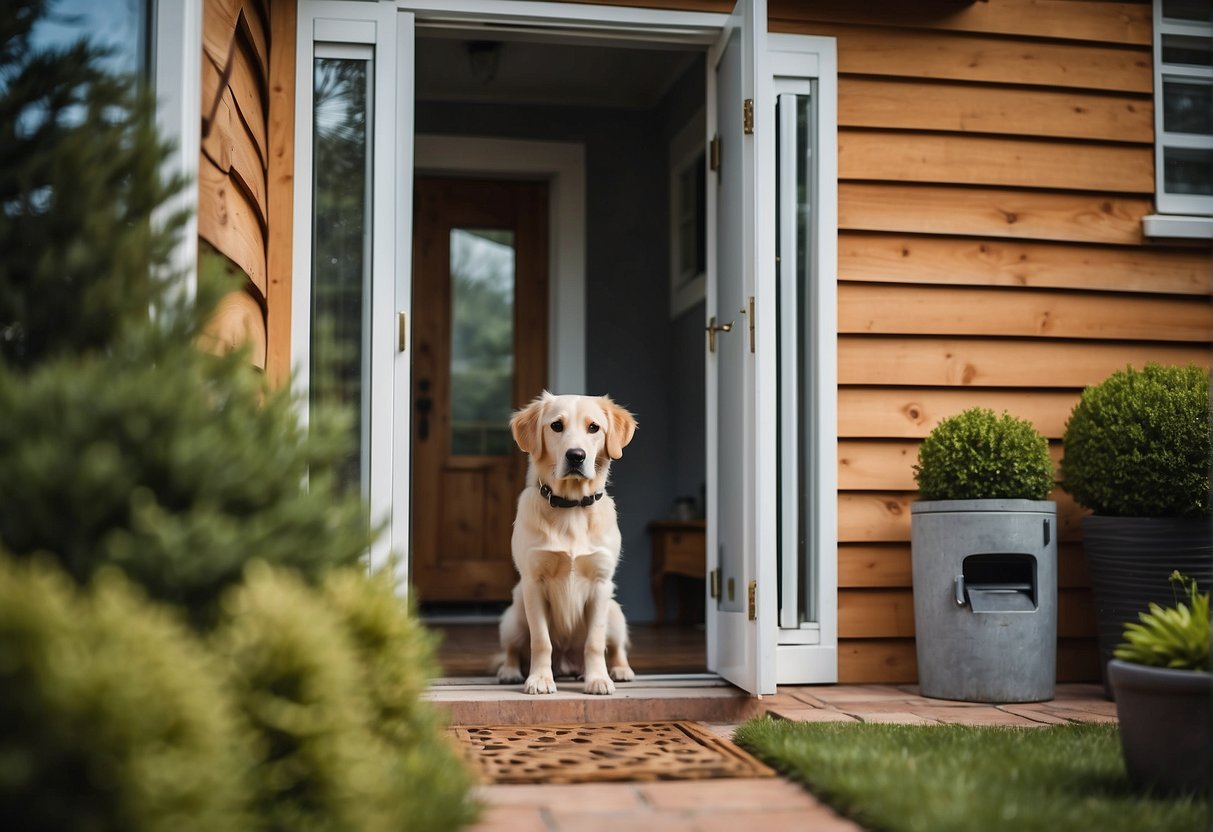
When you adopt a dog, figuring out where they’ll go to the bathroom is top priority. You want to set up a spot that’s easy for them to access and easy for you to clean.
Set Up an Indoor or Outdoor Potty Area
If you have a yard, designate a specific area for your dog to relieve themselves. Make sure it’s a spot that your dog can get to quickly, especially when they’re learning. For apartment dwellers or during bad weather, an indoor solution like potty pads or a dog litter box can be a lifesaver.
For your outdoor potty zone:
- Pick a spot that’s free from distractions and not too far from the door.
- Use a leash to lead your dog to the same area each time to reinforce the habit.
For indoor potty solutions:
- Choose an area that’s easy to clean, away from where your dog eats and sleeps.
- Place the potty pads or litter box in a permanent location so your dog knows where to go every time.
Have Cleaning Supplies Ready for Accidents
Accidents will happen as your new dog gets used to their new home and routine. Be prepared with the right tools to clean up:
- Enzymatic cleaner: Breaks down stains and odors, so your dog isn’t tempted to mark the same spot.
- Paper towels: For blotting up liquids before cleaning.
- Scrub brush: Sometimes, you need a bit of elbow grease for tough stains.
Keep these supplies in a handy spot for quick cleanups.
Establish a Regular Schedule for Potty Breaks
Dogs thrive on consistency. Creating a routine for potty breaks helps with housetraining and prevents indoor accidents.
Consider your dog’s age and needs:
- Puppies: Need to go out every 1-2 hours, as well as after meals and naps.
- Adult dogs: Typically require three to five breaks throughout the day.
Getting your dog on a schedule will also help you anticipate and manage their needs, preventing accidents and making housetraining smoother for both of you.
Store Personal Items Out of Reach

Before you bring home a furry friend, make sure that personal belongings are stored safely away. This not only protects your items from chew-happy pups but also keeps your new dog safe from potential hazards.
Safeguard Shoes and Clothes
You love your shoes, and surprisingly, so will your new pup. Shoes, with their enticing leather and strings, can become a quick chew toy. Keep them tucked away in a closed closet or a shoe rack with a protective cover. Clothes, especially socks, should also be stored in drawers or hampers — wherever a curious nose can’t find them.
Protect Children’s Toys and Small Items
Kids’ toys aren’t just a choking hazard for your dog; they’re also treasured by your little ones. You’ll want to keep harmony in your home by placing toys in baskets or shelves out of your pup’s reach. Similarly, small, easily swallowed items like coins and hair accessories should be kept in containers or drawers.
Secure Garbage Bins and Food Storage
Dogs have a knack for sniffing out snacks, no matter where they are. To prevent a mess — or worse, ingestion of something harmful —use bins with locking lids for trash and recycling. This goes for both kitchen waste and personal bins in rooms like the bathroom. Be just as diligent with food storage; use higher shelves or secure pantry doors to keep your dog from getting into your groceries.
Prepare Your Home for Puppy Teething
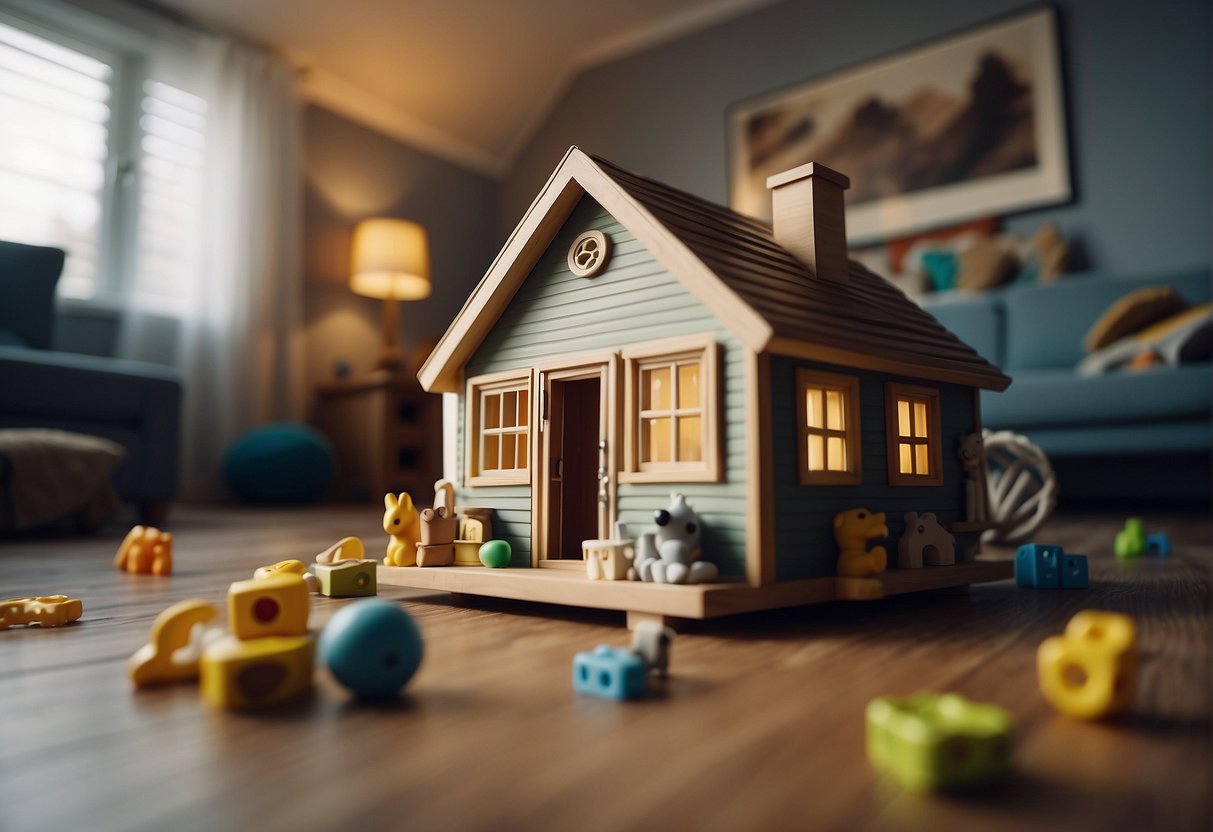
When puppies go through their teething phase, they will chew on just about anything to relieve the discomfort. To save your furniture and provide relief for your new pet, take several important steps.
Buy Chew Toys to Protect Furniture
Chew toys are crucial for managing teething in puppies. Choose a variety of durable toys designed for teething pups to keep their attention away from your furniture. Rubber toys and chew bones that can be frozen are great for soothing sore gums.
Cover or Hide Electrical Cords
Electrical cords can be dangerous if chewed on. You’ll want to protect both your puppy and your electrical items by covering cords with protective sleeves or hiding them behind furniture. Check that cords are inaccessible to prevent any chew-related accidents.
Provide Plenty of Appropriate Chewing Options
Make sure you have plenty of toys around, as having alternatives can reduce your puppy’s stress and the challenges of teething. Puppies love different textures, so mix it up with rubber, rope, and soft plush toys. Always supervise your puppy with new toys to ensure they are safe and appropriate.
Final Thoughts
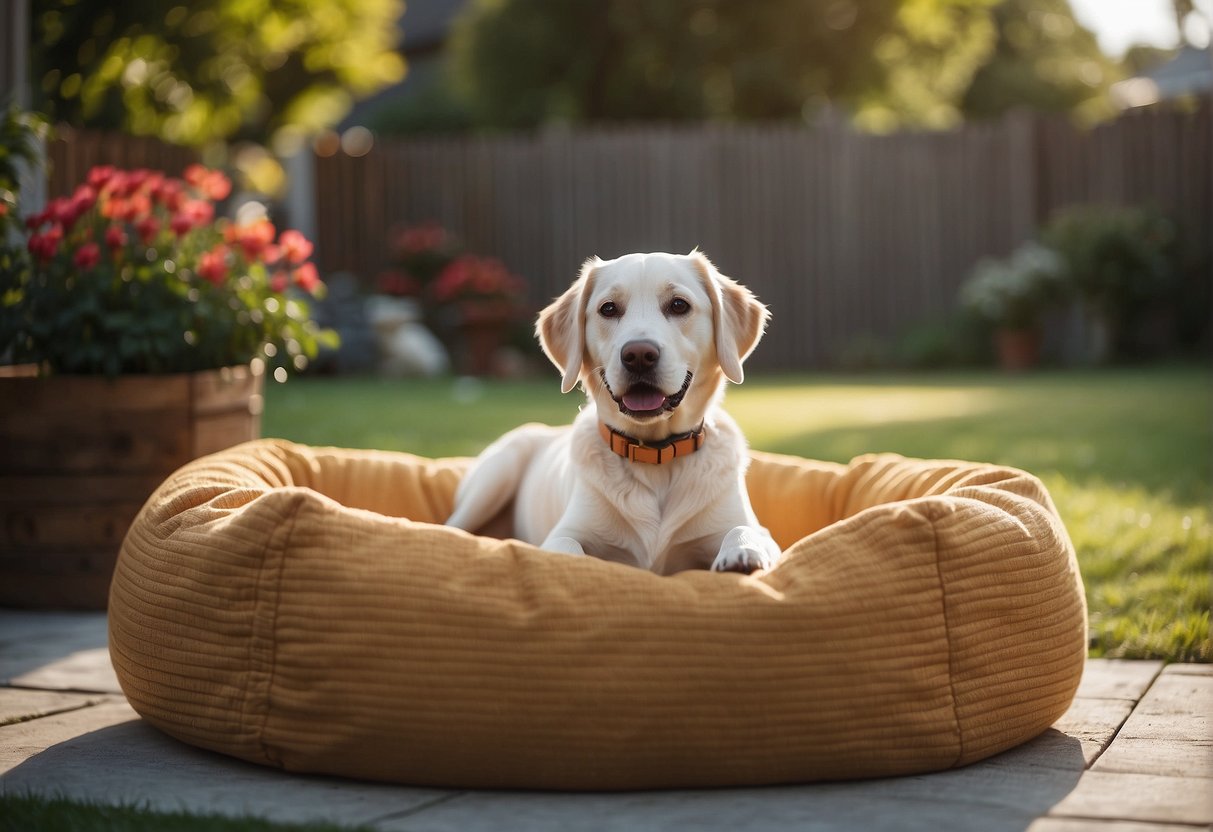
When you decide to adopt a dog, preparing your home is just step one. Your dog will need an adjustment period to feel at home; this is a key time where trust and bonding begin.
During the first few days, your furry companion might be stressed or nervous. They’ll need your patience to learn that they’re safe. You play a big part in creating a comfortable space for them. Give them an area they can call their own, with a cozy bed and some toys. Also, it’s a good idea to remove any items that you don’t want them to mistake for toys.
Establishing a routine is super helpful for trust-building. Regular feeding times, walks, and playtime make your dog understand what to expect from you. This routine doesn’t just make day-to-day life easier; it also strengthens the emotional bond between you two.
Remember, every dog is different. Some might settle in quickly, while others take a bit longer. Either way, give them the chance to get to know you at their own pace. Keep things low-key and be ready with plenty of belly rubs and kind words.
